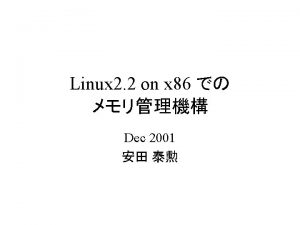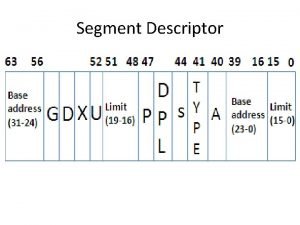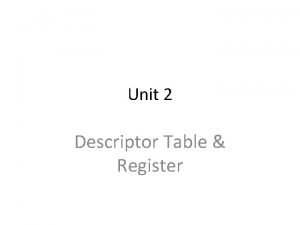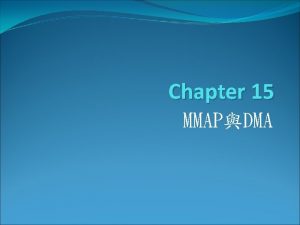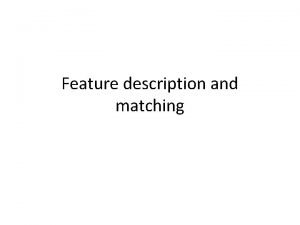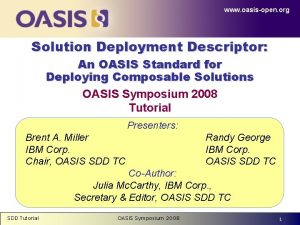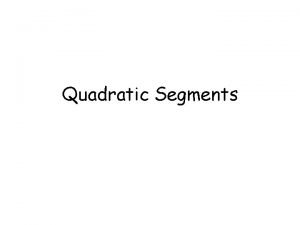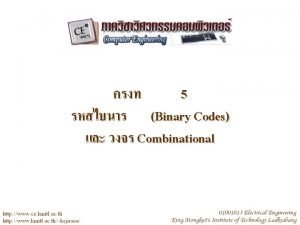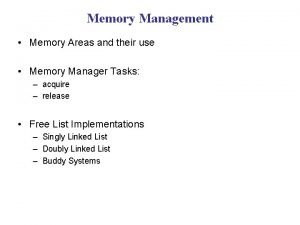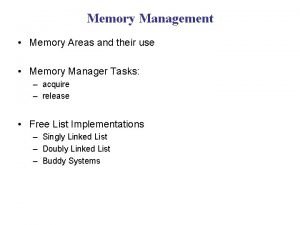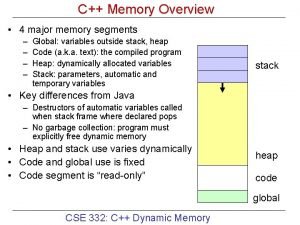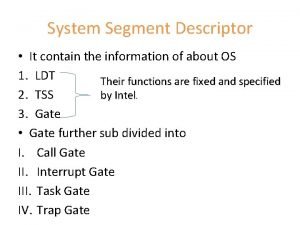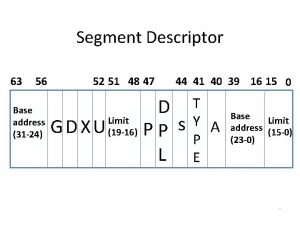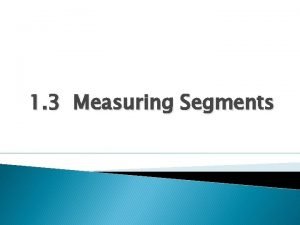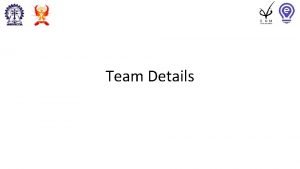Segment Descriptor Segment Descriptor Segments areas of memory

























- Slides: 25

Segment Descriptor

Segment Descriptor • Segments areas of memory defined by a programmer and can be a code, data or stack segment. • In 80386 segments need not be all the same size and aligned. And segments need not be exactly 64 KB long, but we can define them to be any length from 1 byte to 4 GB. • In 80386 memory segmentation, it is not possible to use a 16 -bit segment register to represent all the information related to segment. When multiple privilege levels and intertask protection are required a special structure called a segment descriptor is used.

Segment Descriptor • The description of a segment includes its base address, length, type, privilege level and some security information. • The lower base address is specified in bits 16 to 39 and upper 8 bits are specified in bits 56 to 63. • The lower 16 bits of segments limit are specified in 0 -15 and the remaining 4 bits are specified in 48 -51.

Types of segment descriptors

Non System Segment descriptors • Defines data, code, stack segments. • Used by both system and application programs. • S=1 in access right byte.

Descriptors

Non System Segment descriptors • P bit indicates whether segment is present in memory or not. P = 0 -> Segment is not present and P = 1 -> Segment is present. • DPL: defines privilege level of the segment. Used to protect segment from low privilege caller.

Non System Segment descriptors • S: Used to distinguish between non system segment and system segment descriptors. • S = 1 -> Non system segment descriptor. • E: Executable; Used to distinguish between data and code segments. E=0 -> Data segment including stack. E = 1 -> Code segment. • ED/C: Expand direction/conforming; When E=0, then this bit functions as ED, ED indicates whether the segment is data or stack. ED = 0 -> Data segment( access segment randomly). Offset address limit. ED = 1 -> Stack segment LIFO.

Non System Segment descriptors • When E =1, then this bit functions as C ( conforming) bit. Used to distinguish between conforming and nonconforming code segments. • C= 0 -> Non conforming code segment. • C = 1 -> Conforming code segment. • R/W Read/Write. When E= 0( data segment), then this bit functions as W bit. This bit indicates whether data segment is writable or not. • W = 0 -> data segment is not writable. W= 1 -> data segment is writable.

Non System Segment descriptors • When E =1 (code segment) then this bit functions as R bit. This bit indicates whether code segment is readable or not. R = 0 -> code segment is not readable and R = 1 -> code segment is readable. • A: Accessed; This bit indicates whether the segment is accessed or not. A= 1 -> Segment accessed. This bit is reset by OS periodically. A= 0 -> Segment not accessed

System Segment descriptor Type • All system descriptors are present in GDT while some system descriptors are present in LDTs. • Normally system segment descriptor are used by OS. • The value of S in right access byte is 0. • Their functions are fixed and specified by Intel. • The type of system descriptor is indicated by type field. • The system segment descriptors have no Accessed bit, instead the type field (3 bits) is now extended to 4 bits. • The system segment descriptors contain the information about tables (LDT), tasks(TSS) and gates (call gate, interrupt gate, task gate, trap gate) of the OS.

System descriptors

LDT descriptor (s=0, Type 2)

LDT descriptor (s=0, Type 2) • The LDT descriptors are present in the GDT. They contain the information about the LDT. • LDT contains the segment descriptors that are unique to a particular task. • The DPL field of the descriptor is ignored as this descriptor can only be accessed with a privilege level of 0. • Here type field =2 i. e. it specifies a LDT descriptor.

TSS (Task State Segment) Descriptors (s=0, Type 1, 3, 9 and B) • Whenever a computer is performing more than one tasks at a time it may also switch between these tasks. • The task may be a single program or a group of program. • When one task switches to another task , it stores all the necessary information required to restart the task where it was left. This information is called as the “ state of the task” • For storing the state of the task the 80386 processor uses a special segment called the “Task State Segment (TSS)”

TSS (Task State Segment) Descriptors (s=0, Type 1, 3, 9 and B) • The task segment is addressed with the help of TSS descriptor. It contains information about the location, size and privilege level of a TSS. • A TSS descriptor appears only in GDT and not in IDT or LDT. • The TSS consists the linkage field for the nest task that permits the nesting of the tasks.

TSS (Task State Segment) Descriptors (s=0, Type 1, 3, 9 and B) • B bit indicates whether task is busy or not. B=0 : Task is not busy B=1 : Task is busy

Gate descriptors (S=0, Type 4, 5, 6, 7, C, F) • Whenever 4, 5, 6, 7 is specified in type field it specifies a call gate, task gate, interrupt gate and trap gate respectively. • All fields are same as specified earlier except the word count, selector and offect. • The word count field specifies the number of parameters that are to be copied from caller’s stack to the called procedure’s stack.

Gate descriptors (S=0, Type 4, 5, 6, 7, C, F) • Call gate are used to modified privilege levels. • Trap and interrupt gates are used in interrupt and exception handling. • The task gates are used in multitasking system

Protected Virtual Address Mode Physical address calculation in the protected virtual address mode

Protected Virtual Address Mode 1) PLs > Pldesc->access to segment allowed. 2)MMU checks__> Pdesc determine__> seg present__> phy mem. 3) exception load__>seg mem return__> interrupted prog. 4) 1 st & 2 nd step satisfied MMU will add 16 bit offset.




 Slidetodoc.com
Slidetodoc.com Segment descriptor
Segment descriptor Size of gdtr
Size of gdtr Dermalogica partnership school
Dermalogica partnership school Virtual memory areas
Virtual memory areas Plsql cursors
Plsql cursors Area of segment
Area of segment Physical address vs logical address
Physical address vs logical address Shared vs distributed memory
Shared vs distributed memory Long term memory vs short term memory
Long term memory vs short term memory Which memory is the actual working memory?
Which memory is the actual working memory? Internal memory and external memory
Internal memory and external memory Virtual memory in memory hierarchy consists of
Virtual memory in memory hierarchy consists of Page fault
Page fault Semantic memory
Semantic memory Primary memory and secondary memory
Primary memory and secondary memory Eidetic memory vs iconic memory
Eidetic memory vs iconic memory Explicit and implicit memory
Explicit and implicit memory Pseudocode with functions
Pseudocode with functions Identifying market segments and targets
Identifying market segments and targets Arsitektur sistem komunikasi satelit
Arsitektur sistem komunikasi satelit Feature point matching
Feature point matching Lenguaje descriptor
Lenguaje descriptor Packet descriptor
Packet descriptor Cpt surgical package
Cpt surgical package Deployment descriptor
Deployment descriptor
